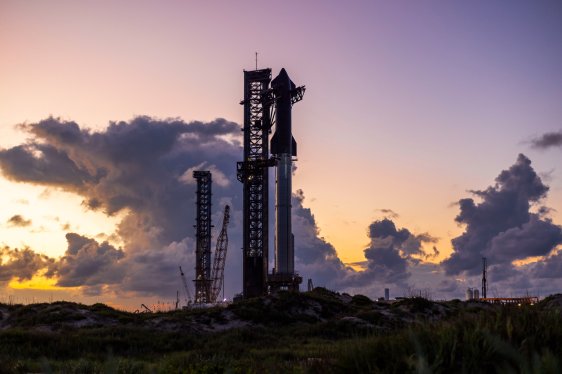SpaceX to Demonstrate Payload Deployment with Upcoming Starship Launch
The latest development in the ongoing Starship test flight program has taken a significant leap forward. With the next rocket launch expected to demonstrate payload deployment for the first time, SpaceX is making rapid progress towards its ambitious goal of deploying 60 V3 satellites per Starship launch.
Payload Deployment: A Key Milestone
The upcoming Starship launch will carry 10 Starlink ‘simulators’, which are model spacecraft designed to mimic the next-gen satellites that SpaceX plans to deploy in space. These simulators will travel on the same trajectory as the upper stage, also called Starship, and splash down in the Indian Ocean.
Why Payload Deployment is Crucial for Starlink
The operational version of these satellites, called V3, will likely be the first real payloads that Starship flies. This milestone is crucial for SpaceX’s plans to more rapidly deploy its Starlink satellite constellation and reduce the costs per satellite launched. Currently, SpaceX launches Starlink using its workhorse Falcon 9 rocket, but the next-gen V3 satellites are expected to be much heavier than the current V2 Mini spacecraft.
Starship’s Payload Capacity: A Game-Changer for Starlink
Thanks to Starship’s incredible payload capacity, SpaceX has said it plans to deploy 60 V3 satellites per Starship launch. This will add 60 terabits per second of capacity to the Starlink network. Per satellite, this equals out to more than 10 times the downlink and 24 times the uplink capacity compared to the V2 Mini satellites.
Upgrades to the Rocket
In a blog post ahead of the seventh test launch, which is expected to take place later this month, SpaceX announced that it is introducing a slew of upgrades to the rocket. These include improvements to the propulsion system, avionics, and heat shield, which will boost reliability and performance.
A New Challenge: Catching the Super Heavy Booster
During this test, SpaceX will also attempt to ‘catch’ the Super Heavy booster, a feat that the company accomplished for the first time during the fifth test in October. This achievement is a significant milestone in the development of reusable rockets and paves the way for more efficient and cost-effective space exploration.
What’s Next for Starship?
As SpaceX continues to push the boundaries of space technology, one thing is certain: the future of space exploration has never looked brighter. With the Starship test flight program taking a significant leap forward, we can expect even more exciting developments in the coming months and years.
Key Takeaways
- The next Starship launch will demonstrate payload deployment for the first time.
- The payload will consist of 10 Starlink ‘simulators’ that will mimic the next-gen satellites deployed in space.
- Starship’s incredible payload capacity allows for the deployment of 60 V3 satellites per launch, adding significant capacity to the Starlink network.
- SpaceX is introducing upgrades to the rocket, including improvements to propulsion, avionics, and heat shield.
Related Developments
- SpaceX’s plans to deploy 60 V3 satellites per Starship launch will add significant capacity to the Starlink network.
- The introduction of upgrades to the rocket will boost reliability and performance.
- The successful ‘catch’ of the Super Heavy booster during the fifth test has paved the way for more efficient and cost-effective space exploration.
Stay Up-to-Date with the Latest Developments in Space
To stay informed about the latest advancements in space technology, be sure to follow TechCrunch’s coverage of the Starship test flight program. With new developments emerging regularly, you won’t want to miss out on the excitement and innovation that is shaping the future of space exploration.
Recommended Reading
- "SpaceX’s Starship Test Flight Program Takes a Significant Leap Forward" by Aria Alamalhodaei (TechCrunch)
- "Starlink: The Next-Gen Satellite Constellation from SpaceX" by Aria Alamalhodaei (TechCrunch)
- "The Future of Space Exploration: Trends and Developments to Watch" by TechCrunch’s Space Team




